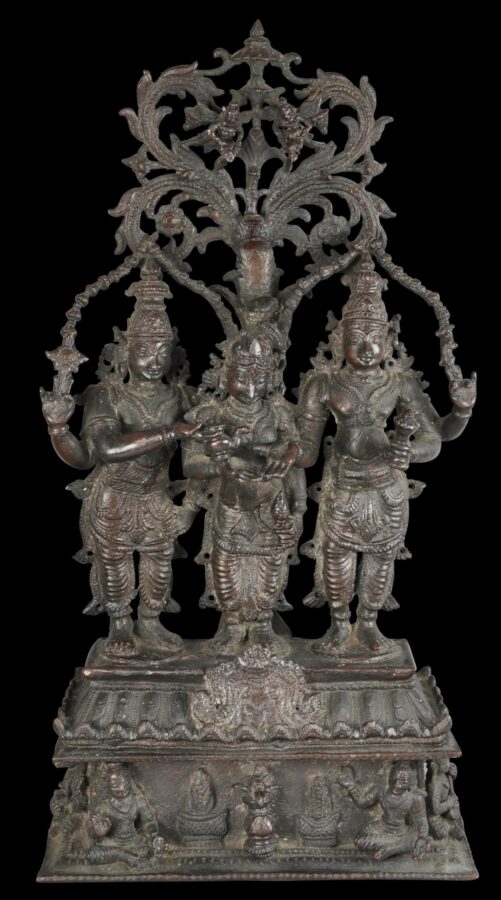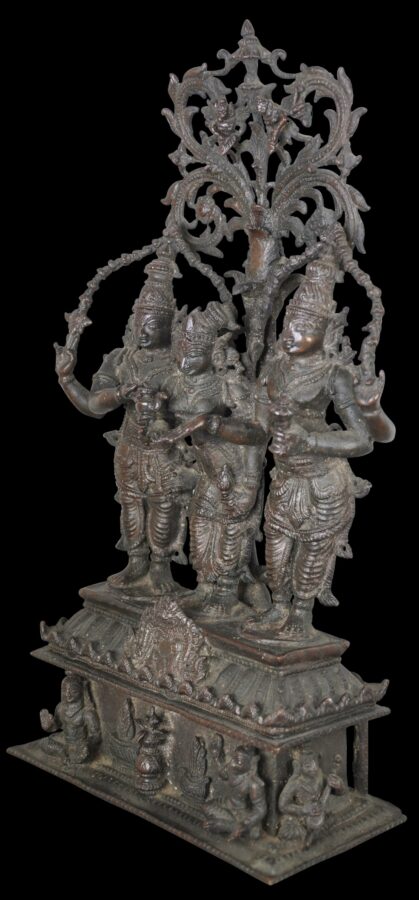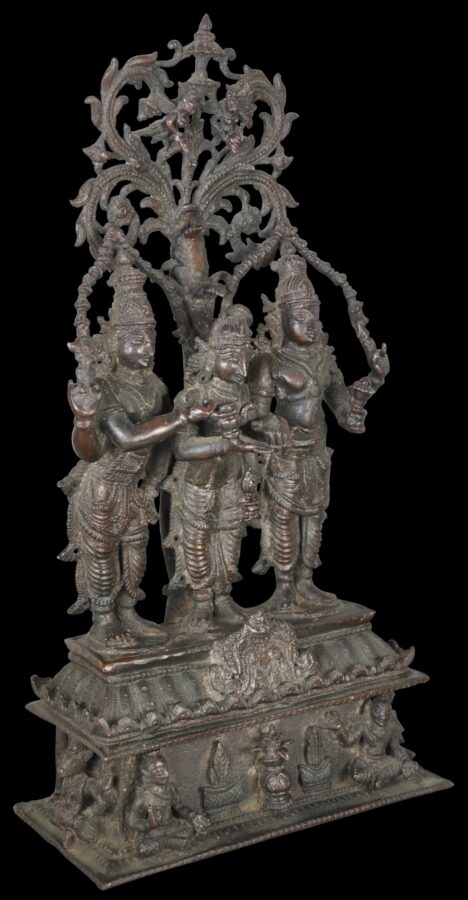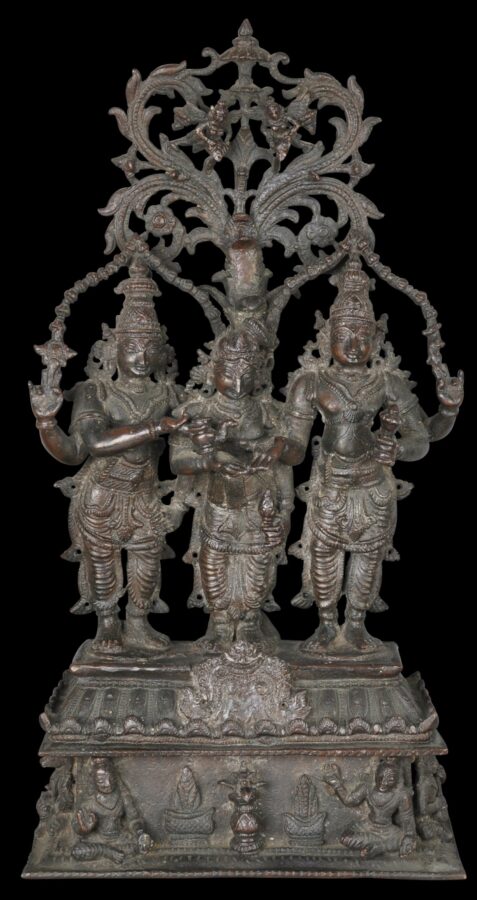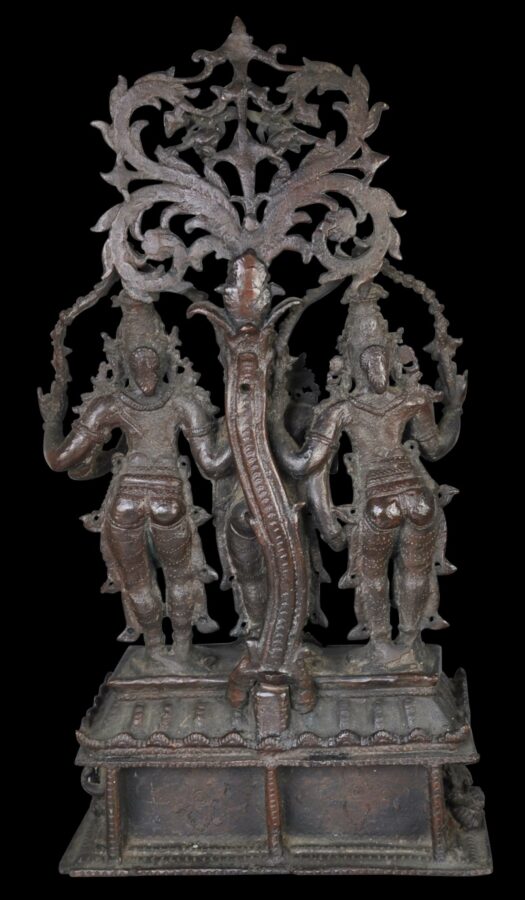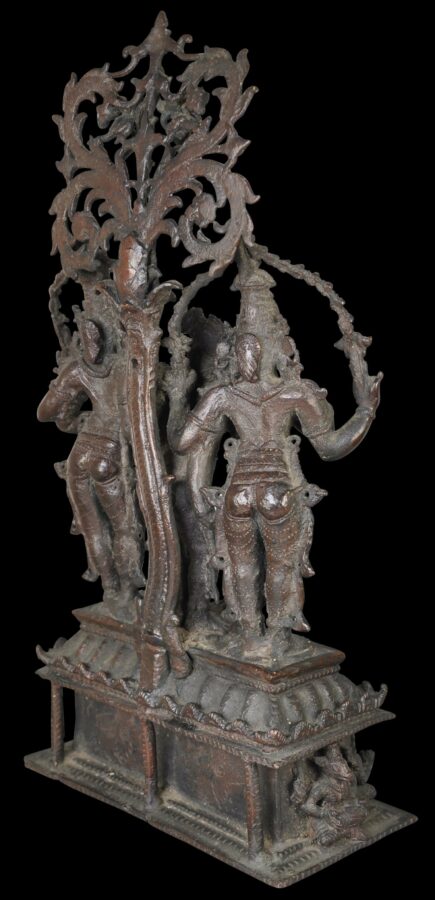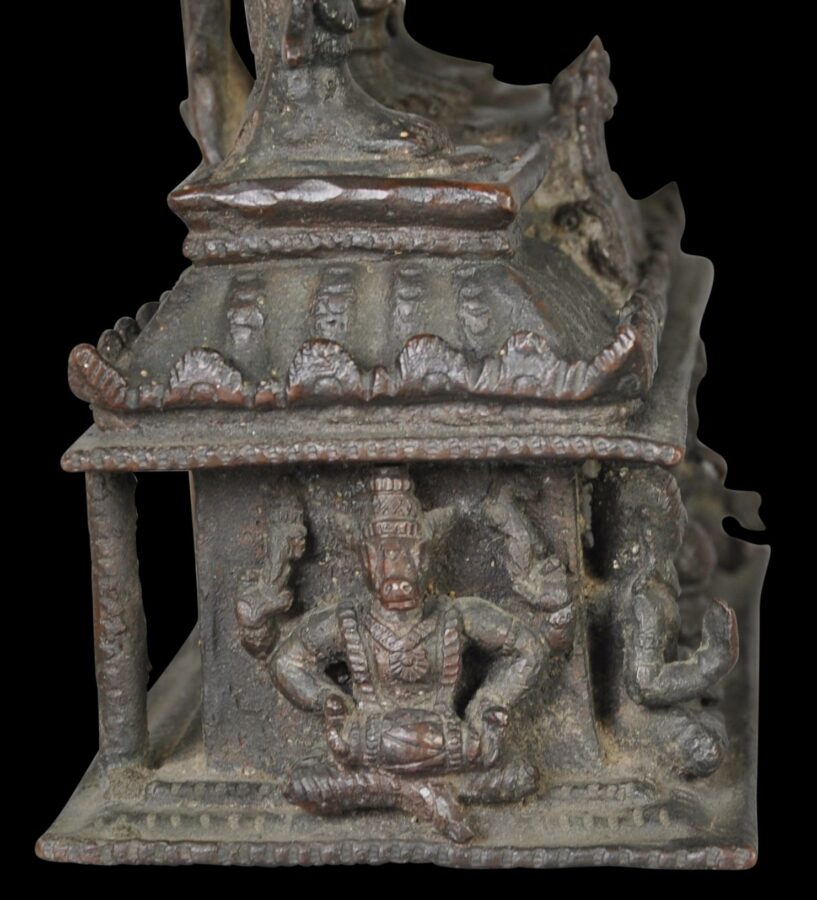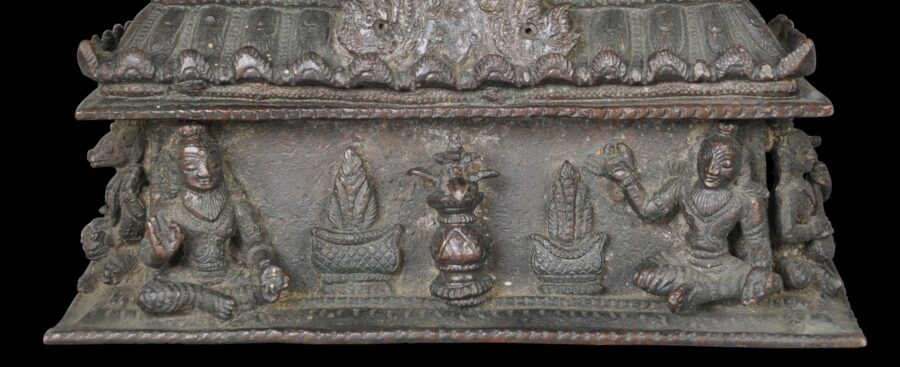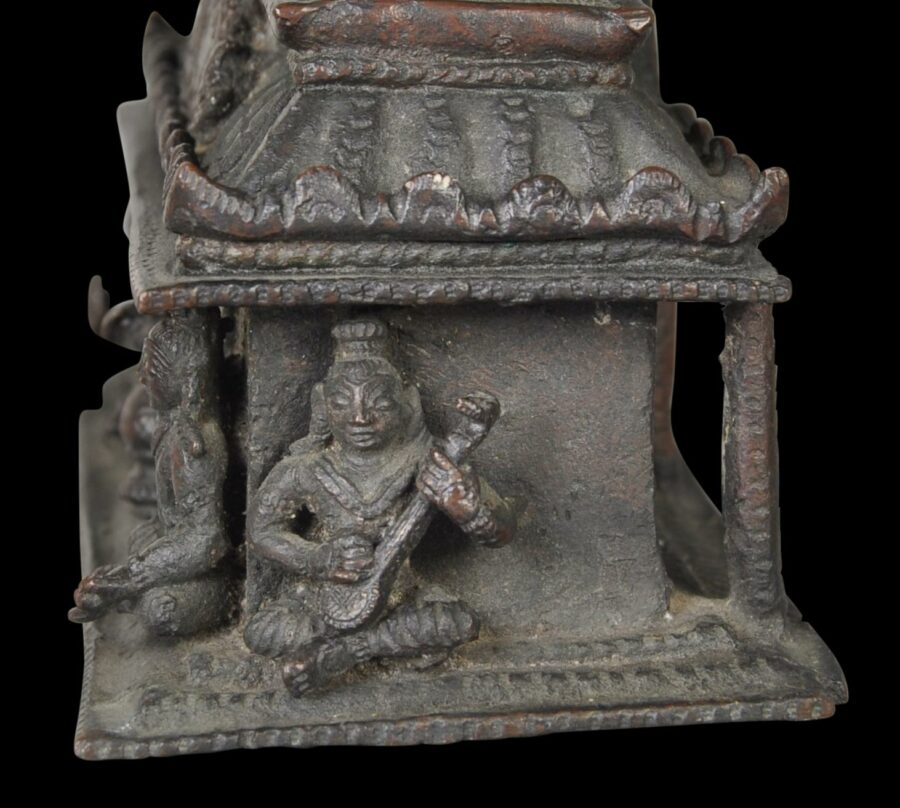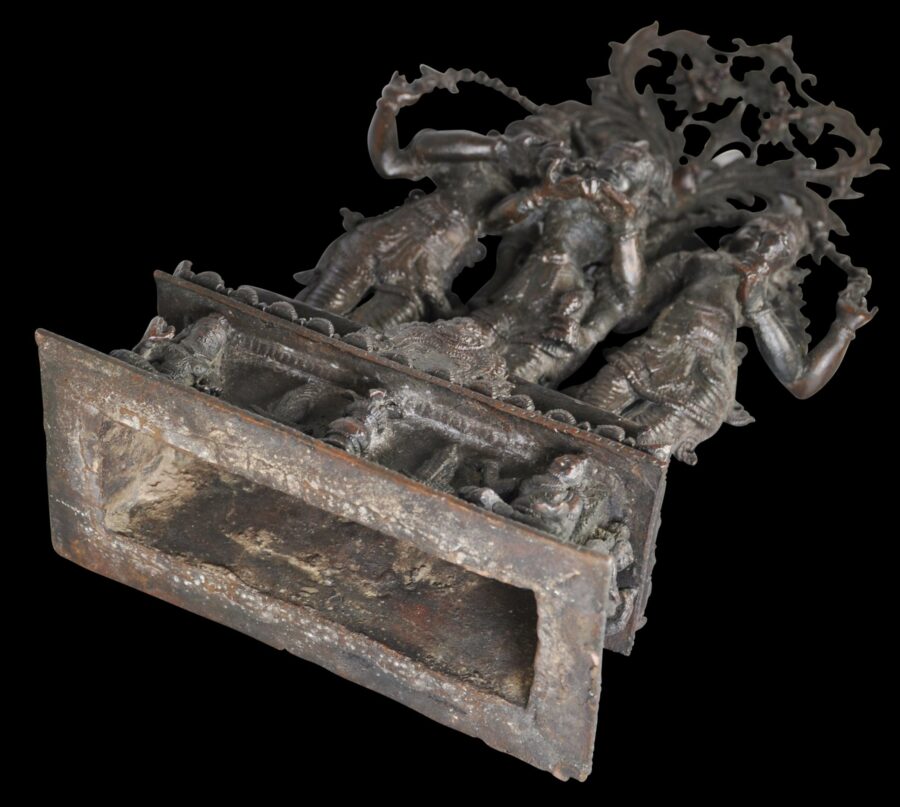This complex and unusual bronze from South India shows the deity Parvati standing in the middle with her brother Vishnu on her right who is giving her away in marriage to Shiva who stands on her left.
Vishnu has four arms and holds in his upper right hand a conch, one of his attributes. Shiva also has four arms and holds in his upper left hand a small deer, one of his attributes.
Vishnu uses his lower right hand to hold a spouted water pot or lota to lustrate both palms of Parvati’s hands as part of the wedding ritual.
Rising above is a pierced tree-like aureole. The use of the tree motif again symbolises life and marriage. But also, it is likely that the tree is a peepel tree, a tree associated with Vishnu. Two winged nymphs have been cast into the tree and they lustrate three trio below with water that drips from peepel leaves.
The trio stand on a high, tiered, rectangular platform which is cast on the sides with instrument players who play music as befitting a wedding ceremony. The musician beneath Vishnu is actually Nandi, Vishnu’s vahana or celestial vehicle, who plays a mridangam drum.
Parvati is regarded as the daughter of the Himalayas, and represents the gentler qualities of the Mother Goddess. She is never seen without Shiva and so is seen as the sakti (energy source and consort) of Shiva. Her obedience to Shiva is seen as emblematic of the devotee’s relationship to God. The marriage of Shiva and Parvati is one that endures for all time (unlike other marriages between other deities) and so many Hindu’s regard images of the two as appropriate for their homes. Ganesh and Kartikeya are the offspring of the two.
The bronze has a dark rather than a brown or green patina suggesting that the alloy used to cast the image has relatively little copper.
References
Lama, M.N., Ritual Objects & Deities: An Iconography on Buddhism & Hinduism, Lama Art, 2003.


